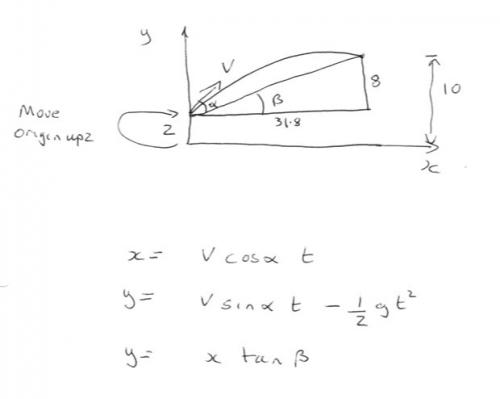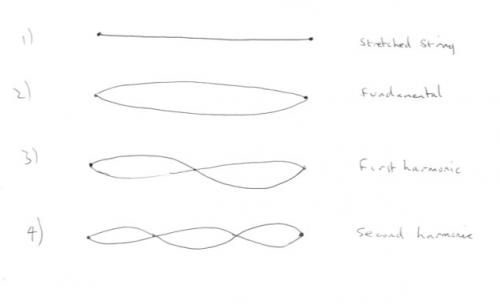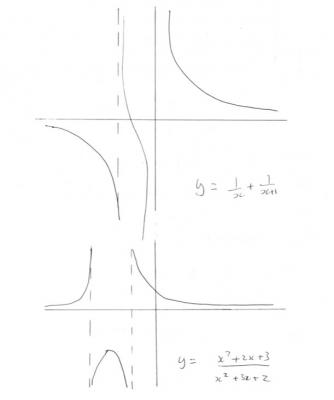-
Posts
18482 -
Joined
-
Last visited
-
Days Won
108
Content Type
Profiles
Forums
Events
Everything posted by studiot
-

What can I dissolve Alkaline Earth Aluminate in and how?
studiot replied to SwoYo's topic in Inorganic Chemistry
Surely not. Perhaps you do not understand the meaning of disperse systems, which are one of the commonest systems in Nature. -

What can I dissolve Alkaline Earth Aluminate in and how?
studiot replied to SwoYo's topic in Inorganic Chemistry
I hesitate to offer advice here. John Cuthber et al have said most of the science and it has not been well received. I am not sure if you have any of the powder you refer to, but if you are prepared to experiment there may be a way. You do not need a solution for this you need a disperse system (sometimes wrongly called a colloid) with your powder as the disperse phase and something transparent to the input and output wavelengths as the disperse medium. Note that most substances that retain energy for later release as light take in energy at one wavelength and release it at another. -
There are almost no 'standard' notations. Many conventions have grown up from convenience. Some stem from typographical constraints, eg superscript, greek letters and special symbols. Some from the desire to fit in with a larger scheme eg the use of x, y, z or x0, x1, x2 or x1, x2, x3 for axes, Some from the simple fact that there are substantially more constants and possible variables in physics and maths than there are in several alphabets put together. Some from convenience in use eg the D operator v Leibnitz dy/dx v Newton's prime notation in calculus. And some from the fact that historically different symbols for the same quantity evolved in two different geographical regions or disciplines so your notation depends where and in what subject you are writing. Finally in the teaching on mathematical subjects some consistency is desirable so as students progress through they are not constantly presented with new and different notation for something familiar. Failure to implement this impedes learning and understanding.
-
Dell batteries have a built in battery tester on the bottom http://www.youtube.com/watch?v=m65yBJylgZ8
-
Are you studying impulsive forces now?
-
You really are a glutton for the extreme. I haven't ever had need to think about it but the usual thing in those circumstances would be to generalise the binomial expansion with the multinomial expansion. http://en.wikipedia.org/wiki/Multinomial_theorem
-
Indeed there are. You have uncovered Leibnitz rules. Well done. This develops the nth derivative of a product of two functions u and v via the binomial coefficients of lower derivatives, For example [math]\frac{{{d^2}}}{{d{x^2}}}\left( {uv} \right) = u\frac{{{d^2}v}}{{d{x^2}}} + 2\frac{{du}}{{dx}}\frac{{dv}}{{dx}} + v\frac{{{d^2}u}}{{d{x^2}}}[/math] [math]\frac{{{d^3}}}{{d{x^3}}}\left( {uv} \right) = u\frac{{{d^3}v}}{{d{x^3}}} + 3\frac{{du}}{{dx}}\frac{{{d^2}v}}{{d{x^2}}} + 3\frac{{{d^2}u}}{{d{x^2}}}\frac{{dv}}{{dx}} + v\frac{{{d^3}u}}{{d{x^3}}}[/math] http://en.wikipedia.org/wiki/General_Leibniz_rule
-

Introductory materials for crystallography
studiot replied to BloopyBuddy's topic in Modern and Theoretical Physics
Personally I would start with the Readers Digest book Rocks and Fossils A visual guide by Robert R Coenraads For this application. go well -
You have missed out one piece of information - the relationship between x and y on impact. This appears as my third equation. You appear to like messing around with trig, so have a go yourself and post agian if you need further help.
-
Pardon? The units of viscosity are fairy easy to look up on the internet eg this pdf http://www.hydramotion.com/pdf/Website_Viscosity_Units_V2.pdf You should be using the SI units. You will note that they have quoted two types of viscosity. Dynamic viscosity, which is the one I have given you as f Formulae in fluid dynamics are so often divided by the density that a second form of viscosity is often given called the Kinematic viscosity, which is simply the dynamic viscosity divided by the density. [math]h = \frac{f}{p}[/math] This has SI units of metres squared per second or m2 s-1. To see how the units of dynamic viscosity are derived we use Newton's law of viscosity which says that the shear stress in a fluid is proportional to the velocity gradient. [math]Shearstress = \frac{{Force}}{{Area}} \propto velocitygradient = f\frac{{dv}}{{dz}}[/math] Where the dynamic viscosity, f, is the constant of proportionality [math]f = \frac{F}{{A\frac{{dv}}{{dz}}}}[/math] If you are familiar with the following it is called dimensional analysis. we can represent a formula by inserting M for mass, L for length and T for time as the basis of mechanical units [math]\frac{{ML{T^{ - 2}}}}{{{L^2}L\frac{{{T^{ - 1}}}}{L}}} = M{L^{ - 1}}{T^{ - 1}}[/math] So the units work out to mass divided by (length x time) or kg m-1 s-1 However this is normally expressed in as Newton seconds per metre squared, (N-s m-1) which is equivalent (you should check this for yourself).
-
It is a pity that this thread has gone off track since I think Schneibster started off with the germ of a good point about book references. Some threads are about the cutting edge of science and one would not expect material to have made it to the textbooks. Also the old practice of 'pamphlet writing' (some were as big as a large book) has dwindled. So the only sources left are current papers, online or offline. Sf has a dedicated forum for this types of material. However we also have forums dedicated to lower level or older subjects in science and I see references to textbooks and even selected popsciworks are wholly appropriate. Indeed there are periodic requests for lists of such material. So surely it is a matter of (good) judgement as to what is appropriate in any given situation, as is so much in this life. So perhaps a less dogmatic title, coupled with a subtle change of emphasis would permit something good to come out of this thread?
-
It is also important to distinguish between the rate constant and the the equilibrium constant when meeting with this stuff for the first time. I now deserve a cup of tea so here comes my tea break constant.
-
Hello, function. The equilibrium constant is just that - constant. It does not change when you change the concentrations of the constituents - these are not independent from each other. You look K up in standard tables of chemical reaction constants. K does vary with temperature so you should always not this and take it into account. Now look at the equation you have. If K is constant and you increase [H] on the bottom line (first power) then you must increase [HI]2 to compensate. The equation tells you by how much and will be larger since it s effect if proportion to a second power. Does this make sense?
-
Yes and No it is not normally called a sub harmonic, but it could be. Like the louspeaker, the Helmholtz resonator is complicated (although not as much as the loudspeaker since there is no electric to mechanical energy conversion stage). The key word is resonator. You can excite an oscillator with any of the harmonics of its fundamental frequency. So with respect to the resonant (fundamental) frequency of oscillation of the air inside the bottle the effect works best (is at its most efficient) when the rush of passing air contains harmonics of the resonant frequency of the bottle. This is easy to achieve since the passing air approximates to white noise which contains all frequencies. So the bottle 'picks out' or selects energy at is resonant frequency. Incidentally, I don't know how much you understand about the mechanical mechanism of the action but the whole of the air in the bottle does not resonate. A plug of air in the neck is bounced up and down between the pressure of the passing air stream and the restoring force due to the springiness of the air in the large volume of the body of the bottle. This plug of air thus acts as a piston like a loudspeaker cone. It is this that generates the tone you can here, transferred to the general air in the room.
-
Remember also that we are used to seeing 2D curves on flat paper when we talk about curvature. In that case there is only one direction available to curve in and only one plane for the radius of curvature. When we go to 3D, there are two possible radii of curvature at any point on a curve and if we go to 4D spacetime then there are three, with time as one of the plane's axes. This is really the province of differential geometry in higher dimensions, which I think is ajb's speciality.
-
Subharmonics are indeed integral fractions of the fundamental frequency in acoustics. There is no magic in this. Acoustic sources are intended to produce a particular frequency (or several frequencies). We call this the fundamental frequency. Each musical note has one fundamental frequency which is the same for all instruments that produce it. However All sources also create distortion due to their particular method of producing the sound. For scientific purposes we want that distortion to be as little as possible For musical purposes it is that 'distortion' or colouring of the sound that leads to the individual characteristic of instruments. The most common form of distortion is harmonic distortion where integral (whole number) and or reciprocal integral multiples of the fundamental frequenciy are mixed in with the fundamental sound. Integral multiples are called harmonics and reciprocal integral multiples are called sub harmonics. Normally it is only the multiples or harmonics that are wanted. These can appear in significant proportions of the overall output sound, although for most instruments the fundamental is still the largest component. Some wind instruments can be 'overblown' and the output sound is largely a harmonic. A physics way of looking at the fundamental is to consider a stringed instrument. Sound sources vibrate as stationary or standing waves, so they have nodes and antinodes. If you think about it the ends of the string are fixed so they must be nodes. You cannot fit part of a wave between the fixing points there must be a whole number of half cycles between the fixing nodes. (half cycles because a node is a zero crossing point and it is half a cycle betwen these in a wave). The smallest number of half cycles is obviously 1 This is the fundamental. You can have as many larger integral numbers of 'wiggles' as you like, jus so long as you have a node at each end. These are the harmonics. but You cannot produce a wave with a lower frequency on its own because there would not be a node at each end of the string. So sub harmonics can only appear as a distortion of the fundamental or higher (harmonic) frequency. I gather you have posted this question in a proper scientific forum, in search of better information than provided elsewhere. That is sensible and you have come to the right place. But the spirit of this (and many other) forums is that the discussion and information is for all to share so should be put into the thread, not some other way. Technically harmonics or harmonic functions are solutions of Laplaces Equation, which does not contain a forcing term. This includes sub harmonics, the fundamental and harmonics. The theory of this is called potential theory. Harmonics are specified in terms of frequency. Physically the lower the frequency the longer the wavelength, which is the amount of distance you need to accomodate (fit in) the wave. The largest physical dimension (eg the length of my string) provides the largest wavelength and thus the lower limit of pure tone frequency that can be generated by a system (rather as Strange said). So, although they may exist mathematically, you cannot generate pure tones lower than the fundamental. However as I noted in post#3 they may be present as distortion to a higher frequency, fundamental or overtone. However loudspeakers are considerably more complicatated than this. A further complication, often ignored in heated loudspeaker discussions, is "Will the soundwave at the frequency considered fit into the room or is it too large?" All too often 'experts' argue about a wave that could never be developed in the listening room. This is of course why concert halls always sound different from your lounge at home. They are much larger so can accomodate longer wavelength, lower frequencies sound waves. Please address further questions within the thread.
-
Fine, I didn't actually say I agreed or otherwise. That quote was from the contibution to the book by one time particle physicist John Polkinghorne KBE, the quote started his analysis of the flow statement, in relation to the block universe (which I also linked to) which mirrors that here between Lizzie L and the hard physicists here. Pretty well all aspects and all theories of the subject as discussed in this book by the range of experts indicated, including the originator of the light cone. The other quote was from the objectives of the book. It was all supplied in the spirit of adding informatuion for those who might wish to follow it up.
-
The so called 'block universe' is only one view or aspect of time I think the OOP and Lizzie L are trying to reconcile various views or aspects. Insisting upon one over all others is counterproductive IMHO. After all it was a great day for science when inertial mass was shown to be equivalent to gravitational mass. as was the day when the mechanical equivalent of heat was determined. That's progress. https://www.google.co.uk/#q=block+universe
-
Like I said no classification scheme is perfect. Peace and harmony certainly exist in concept , but sadly how much exist in reality is another matter.
-
It won't. I thought you asked for an insulator. Mica is also fireproof.
-
Dekan, have your heard of the terms abstract and concrete nouns? The moon is a concrete noun - it is made of 'stuff' Love is an abstact noun. They are often concepts. If you wish to deny love then there are plenty more eg anger, sorrow and so on that you cannot. It is a philosophical question as to whether something that consists of nothing itself but supports the existence of concrete nouns (space and time) is itself abstact or concrete. No classification scheme is perfect.
-
Double spaced Mica sheet should help here.
-
I'm sorry your Stewart is very different from mine, but someone else may have it. Anyway I meant to say you should try sketching this curve. Have you done any curve sketching? Since you have the ratio of two quadratics consider [math]y = \frac{{a{x^2} + bx + c}}{{d{x^2} + gx + h}}[/math] You are asked what happens when x=0, so substitute x=0; what does that mean for h? Here are a couple of fractions involving quadratics (they are not correct but to illustrate points. How many times does the curve cross the x axis? What horizontal and vertical asymptotes are there? What happens when x is large and+ve; large and negative? You need to consider what about the constants place the corssings and asymptotes to match your requirements.
-
-
Yes I am aware of that and that this is your specialist field. What you are basically saying is the limit of resolution (nothing to do with Heisenberg) is the interval between two zero crossings. We have to assume that time itself flows evenly within this interval. And yes I am using 'tick' in the most general sense. This is somewhat akin to the limit of spatial resolution of various types of microscope.





